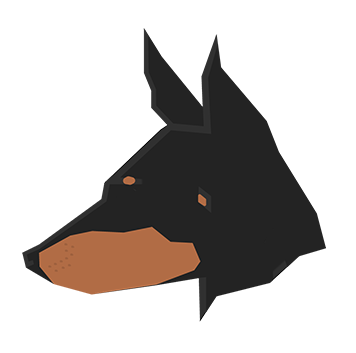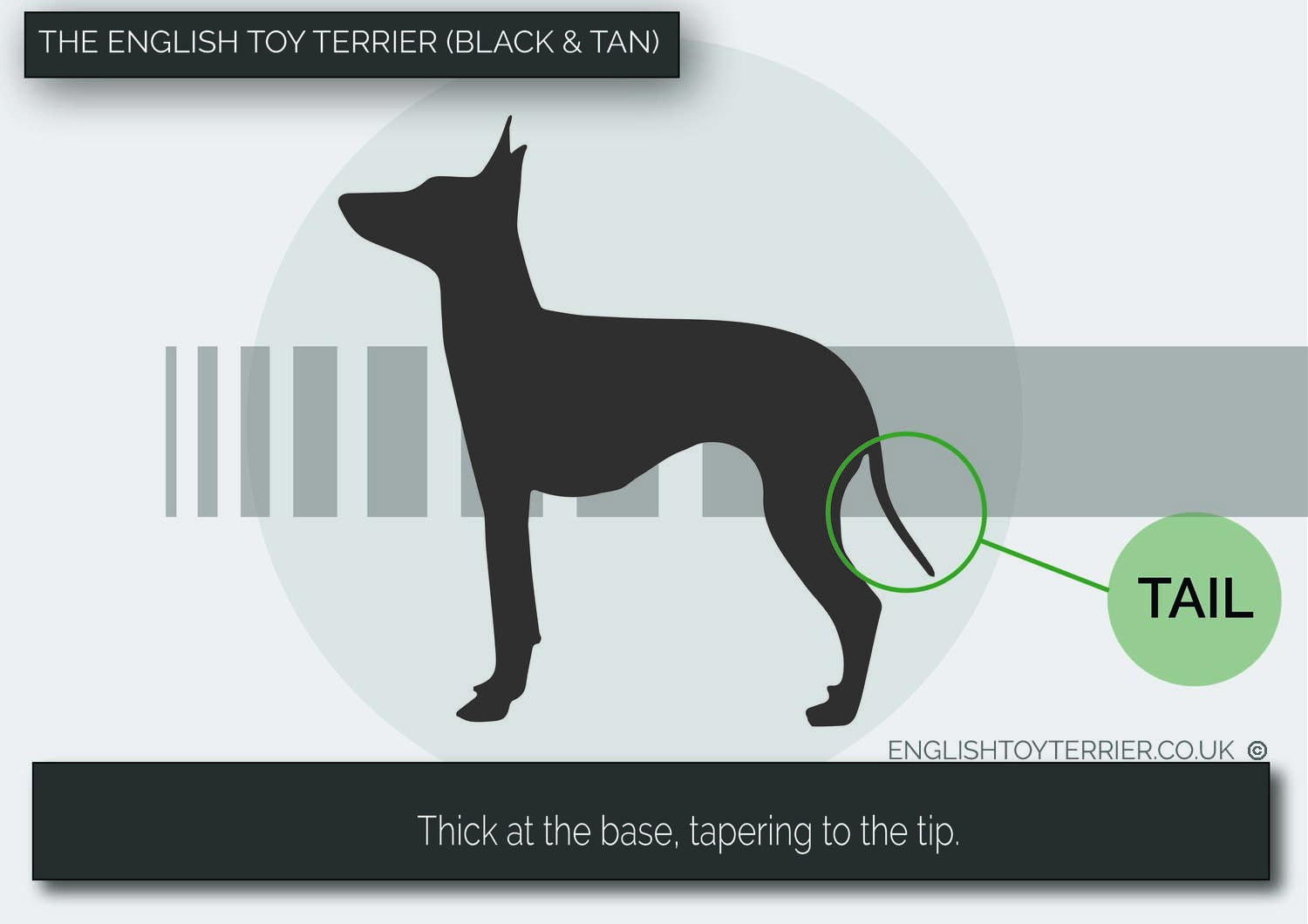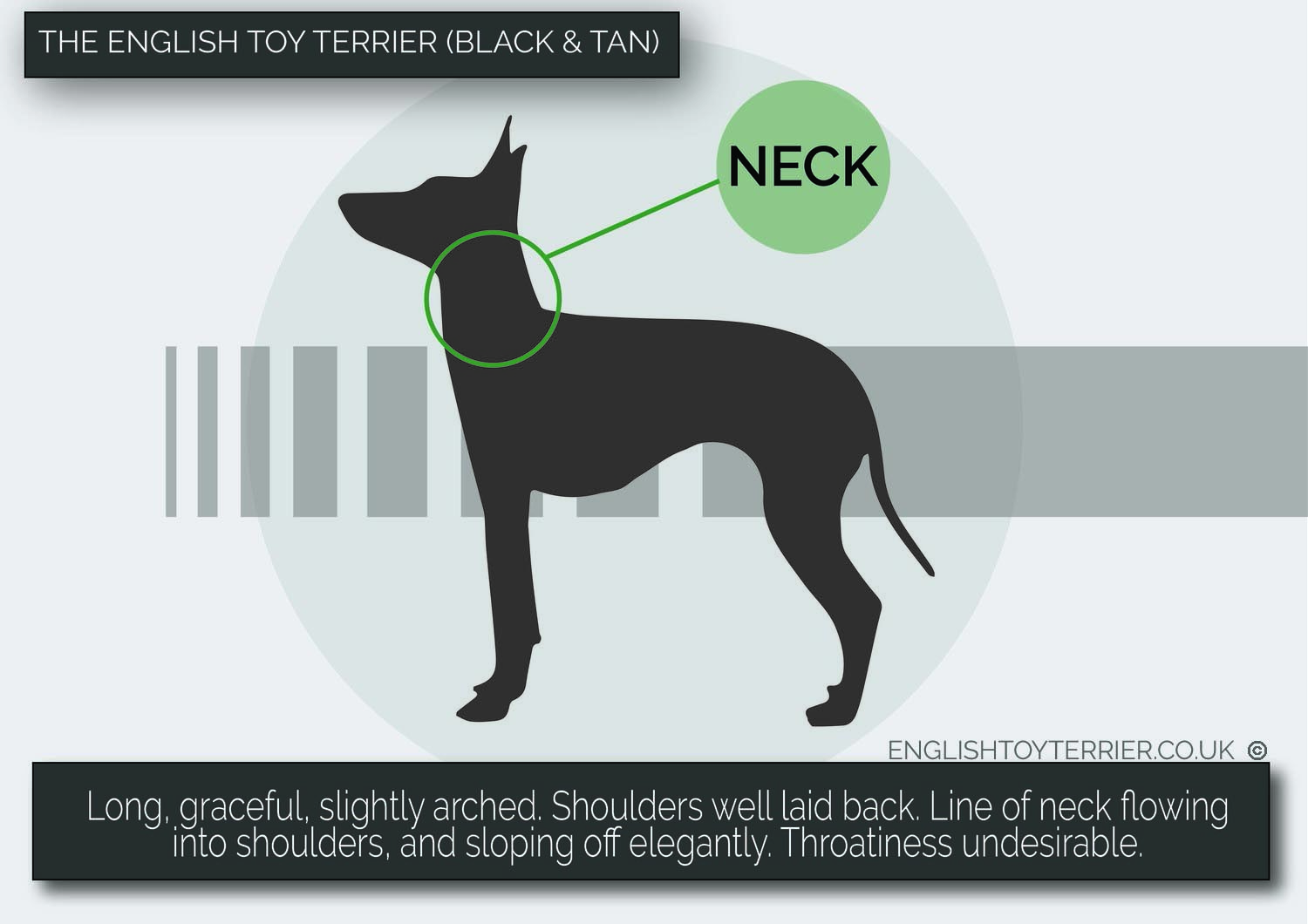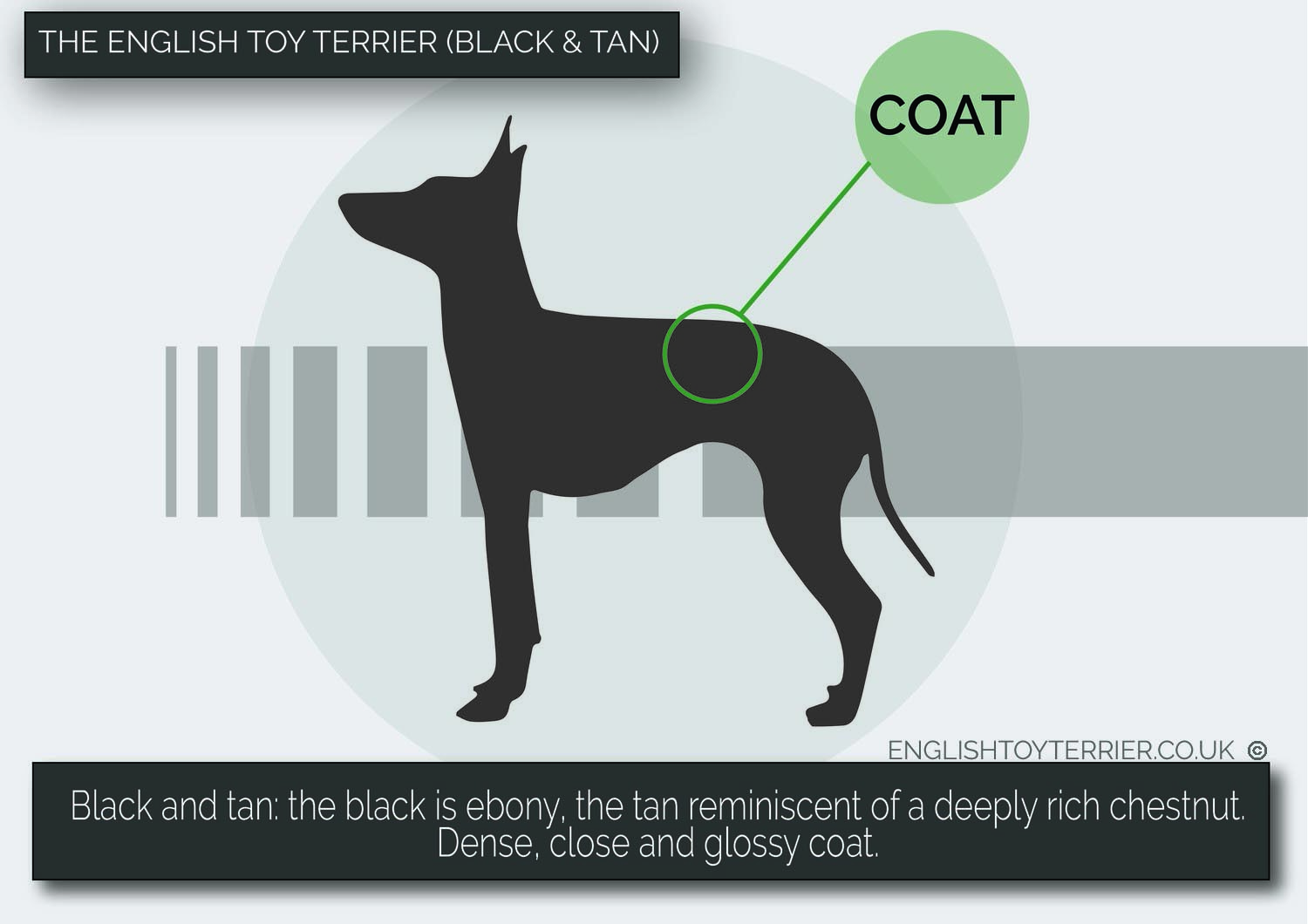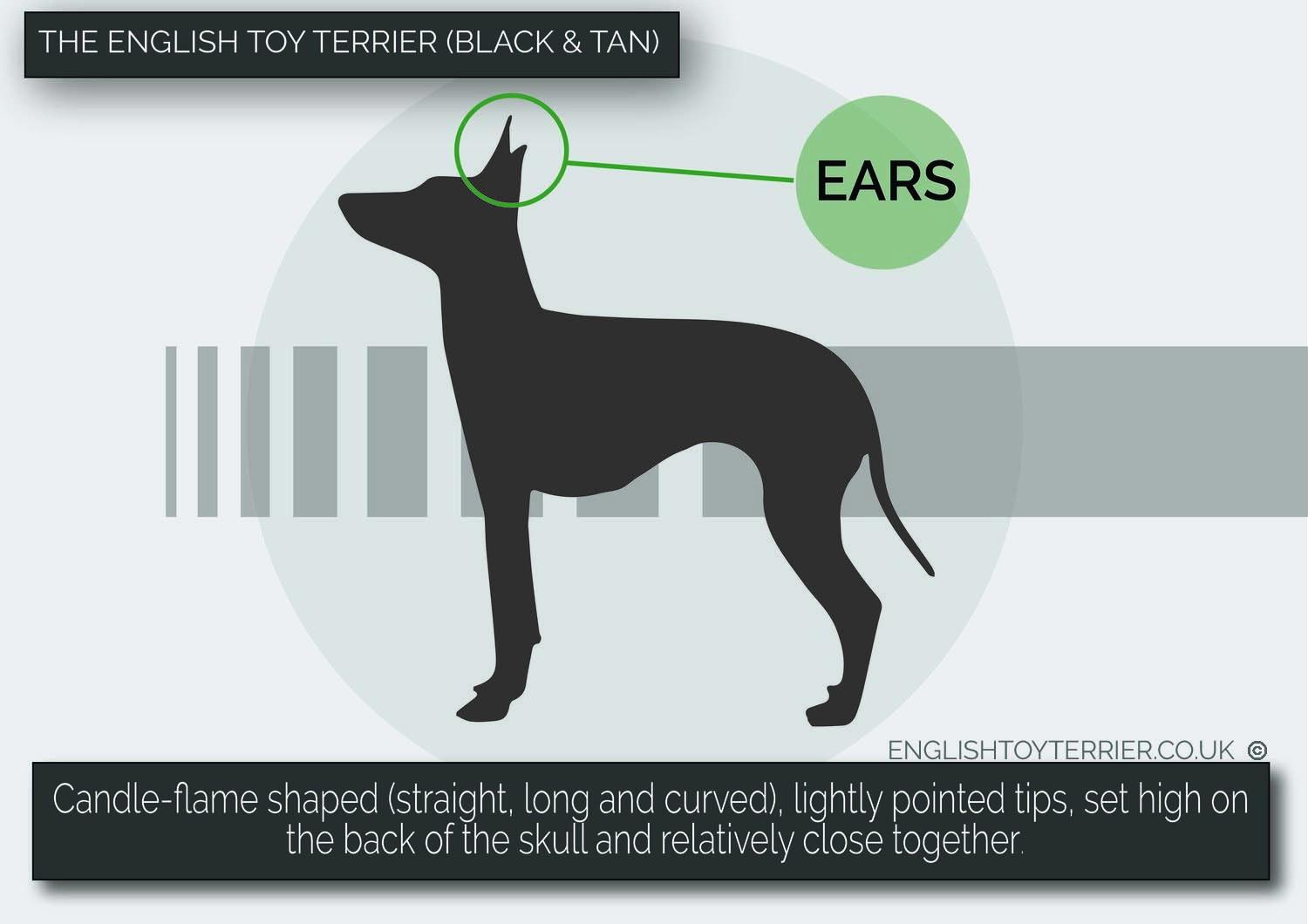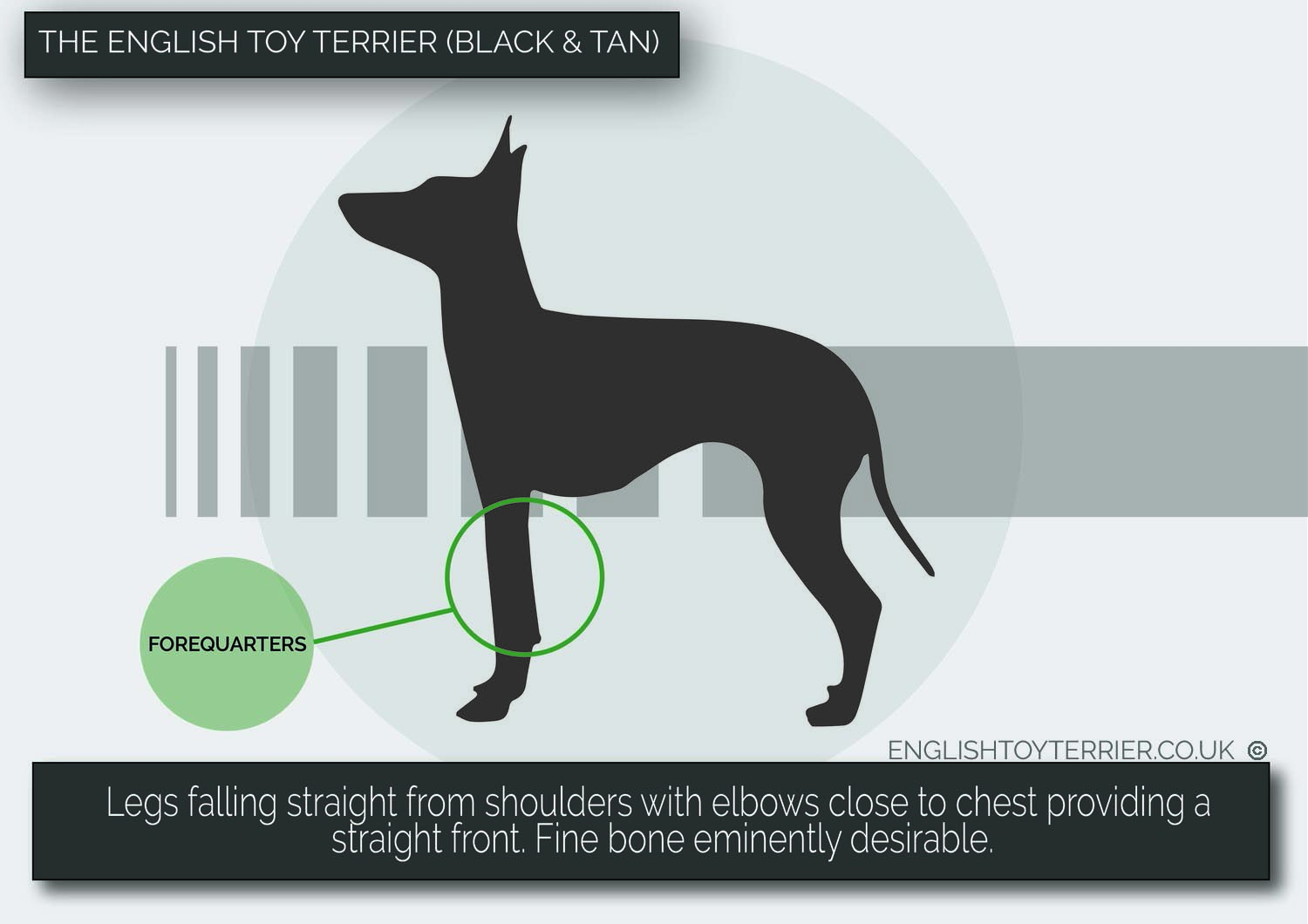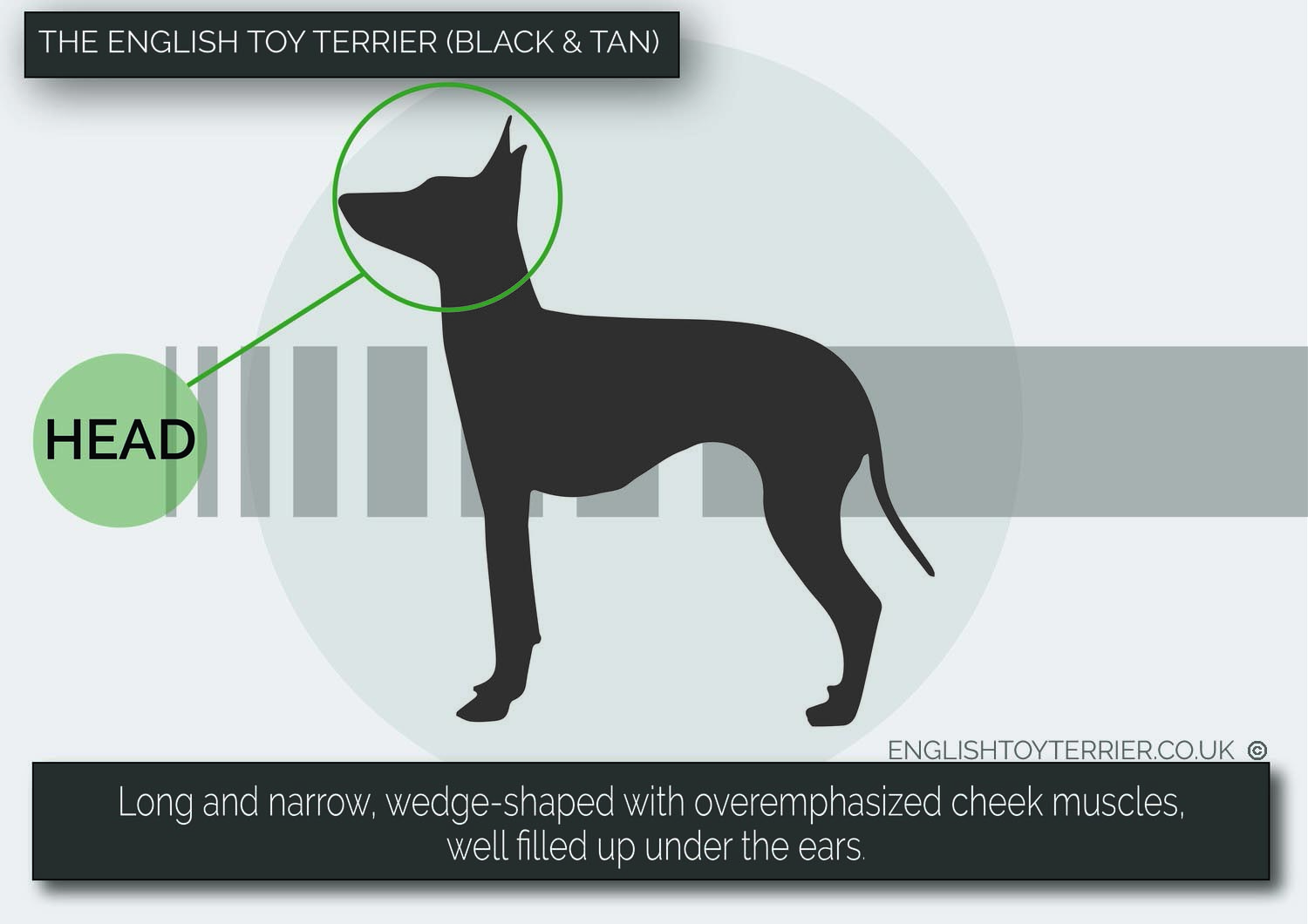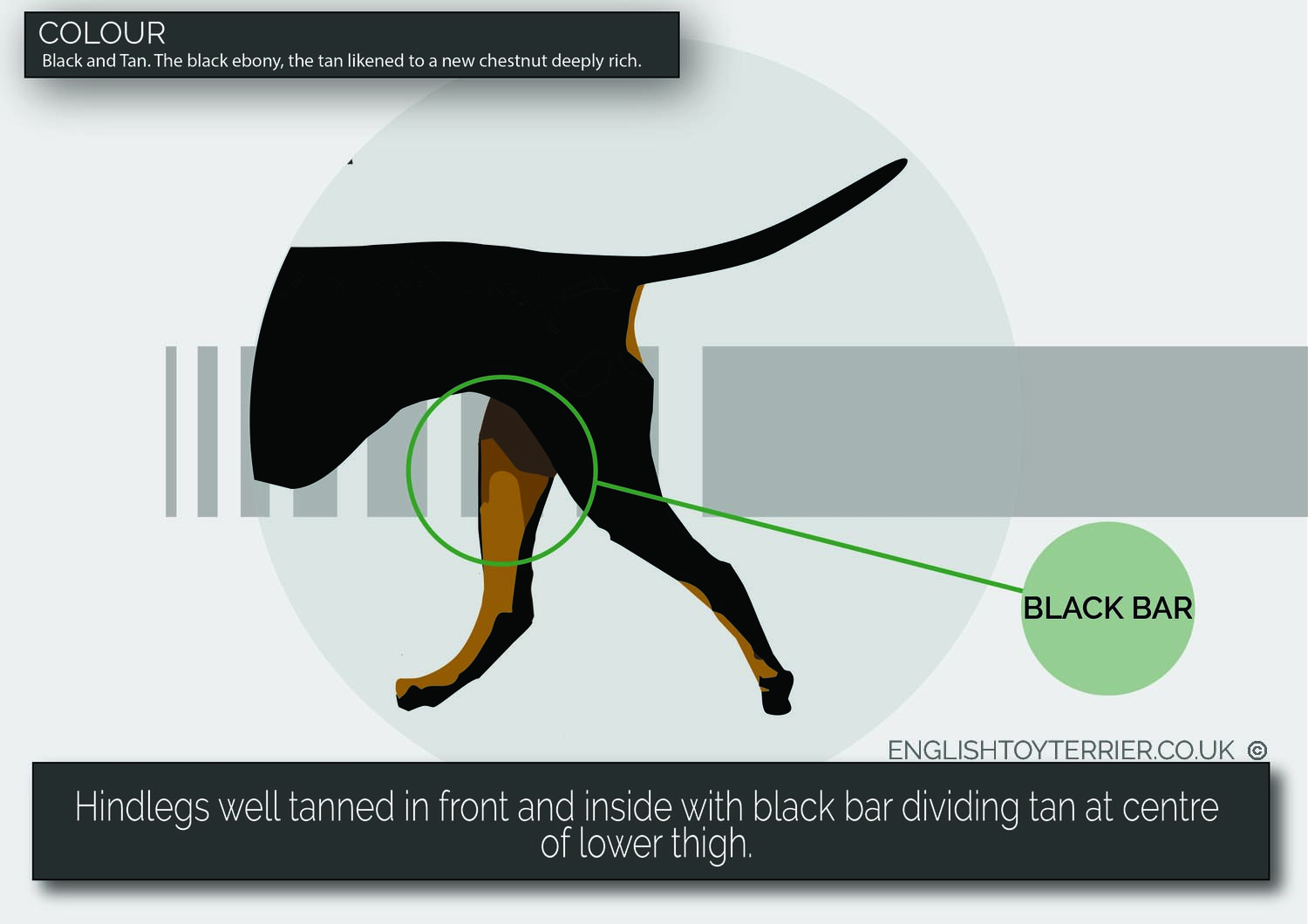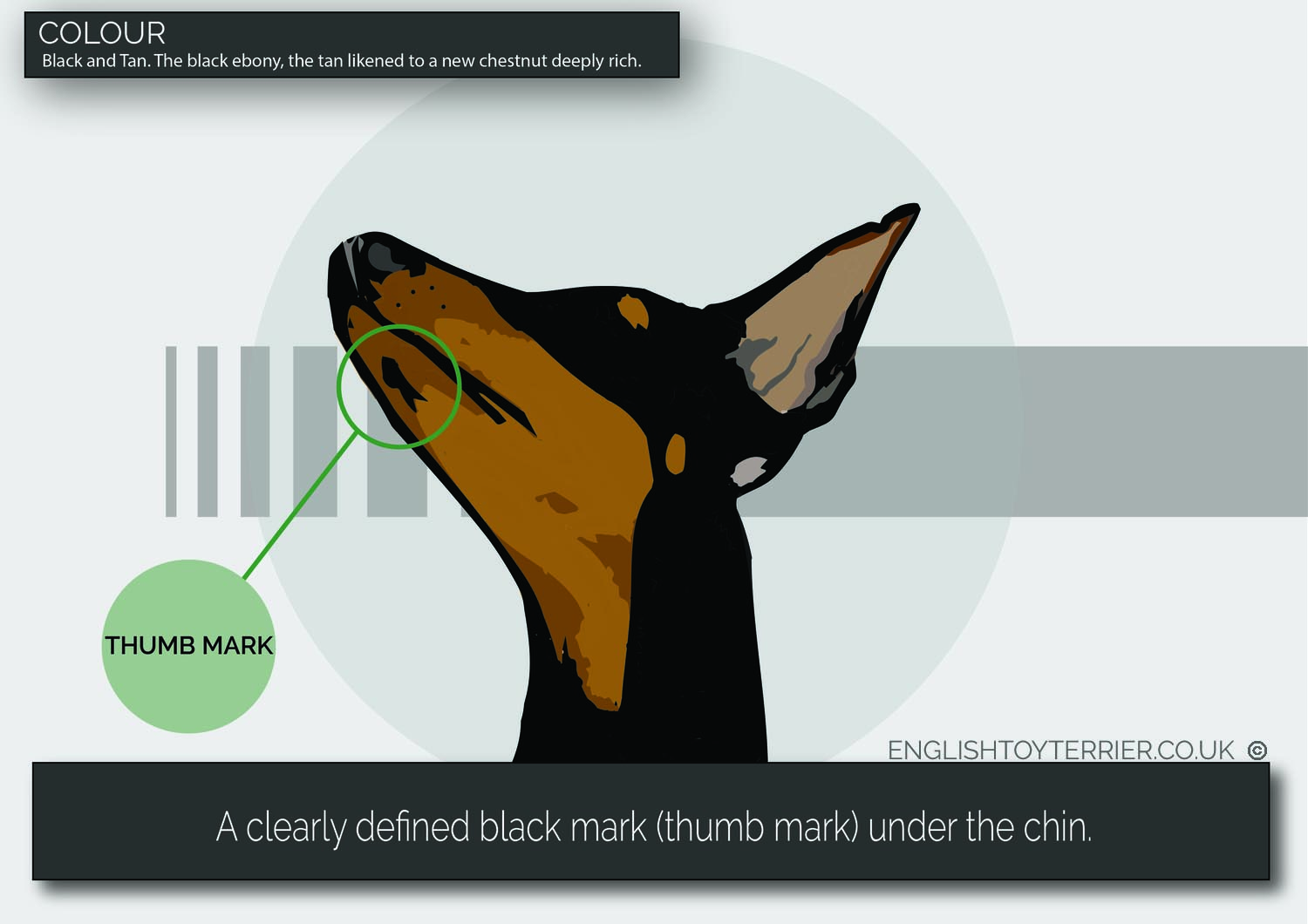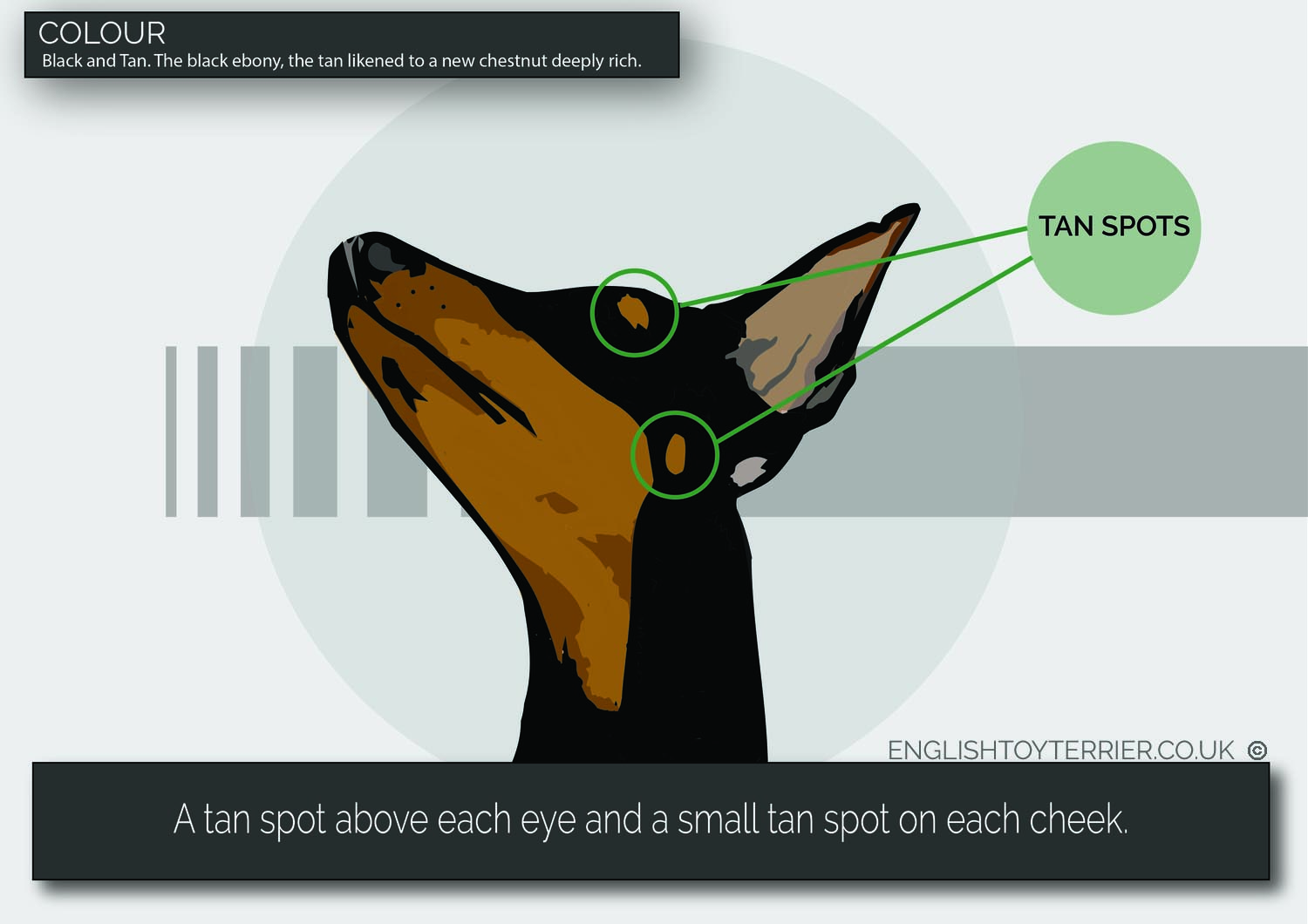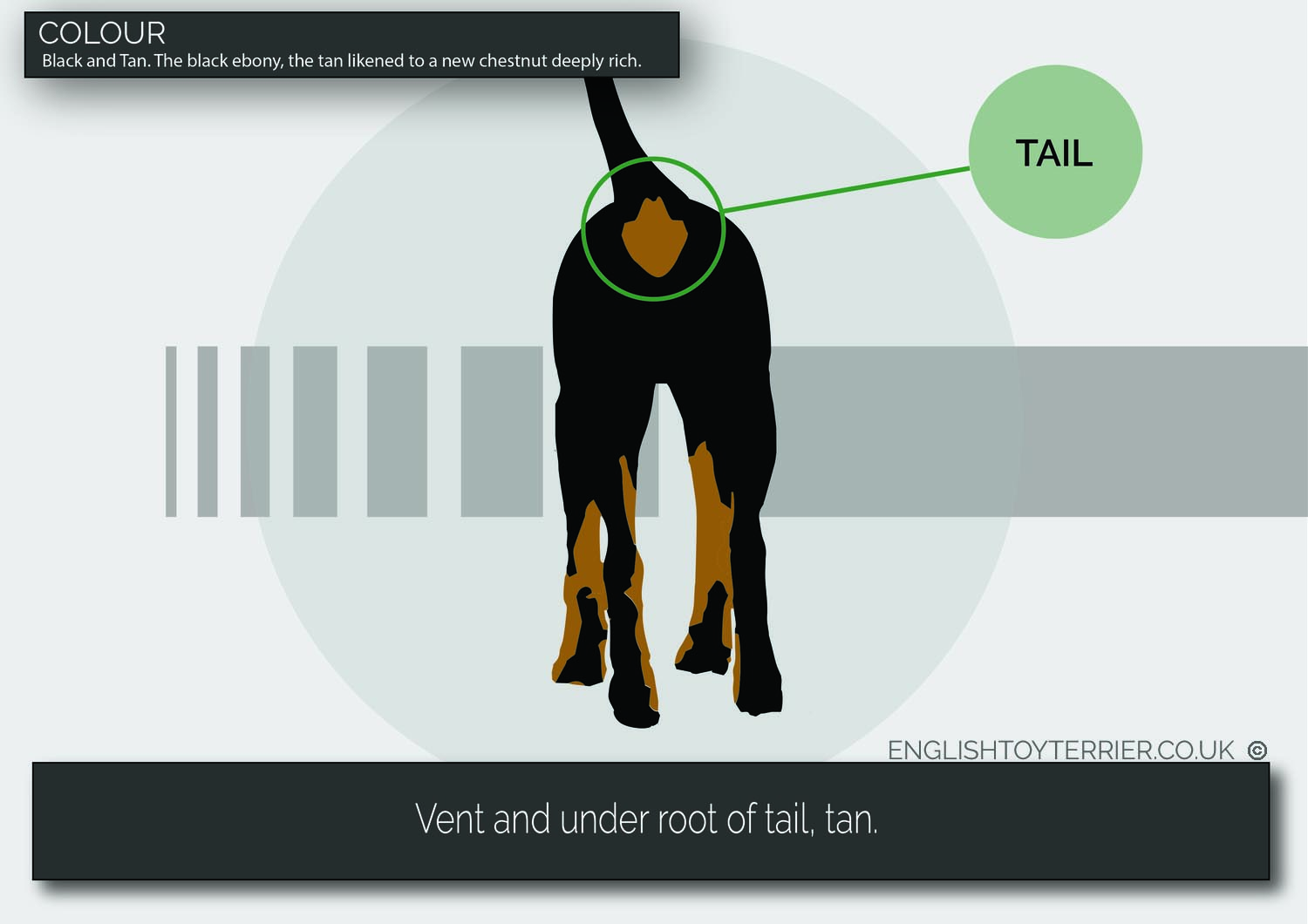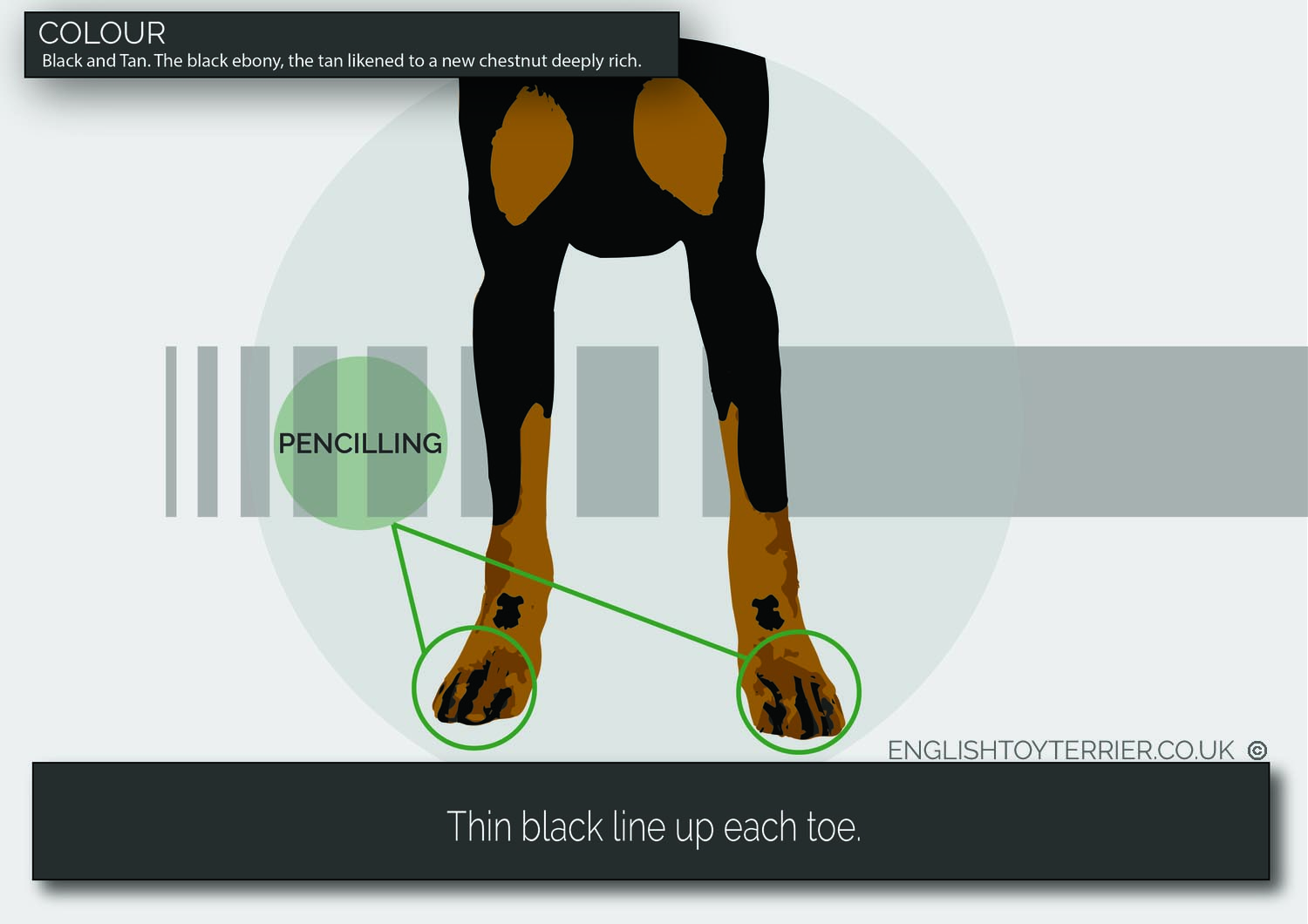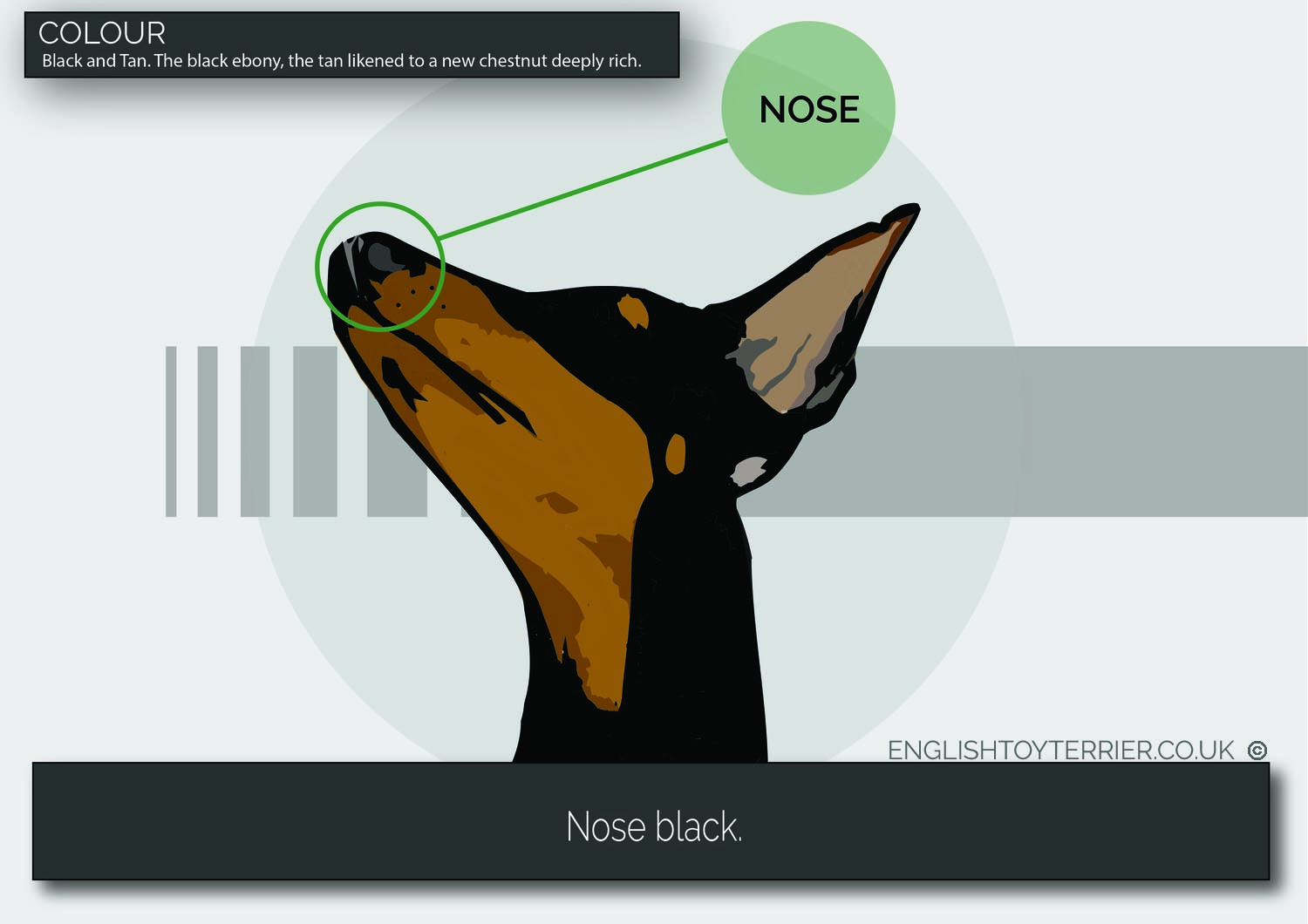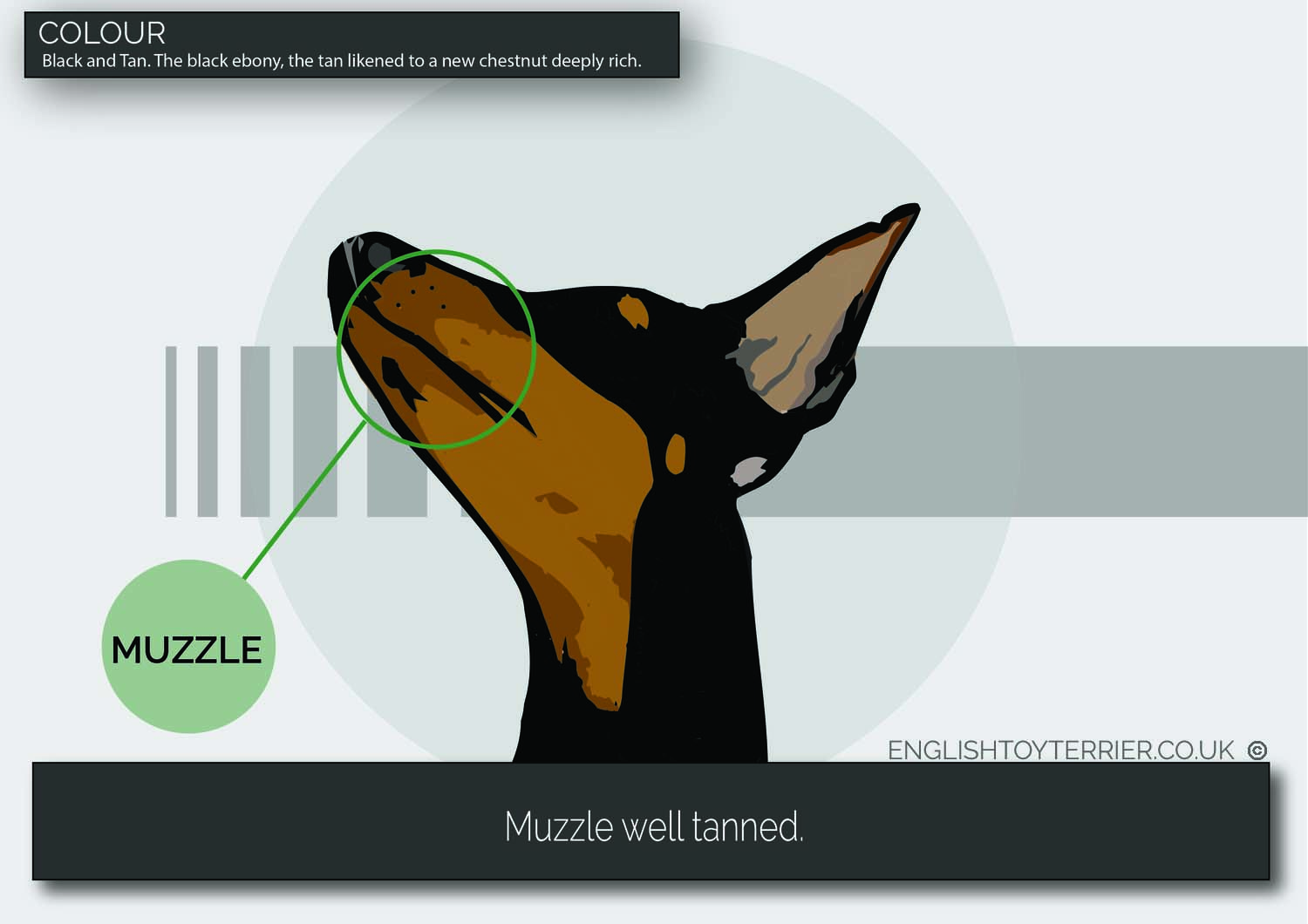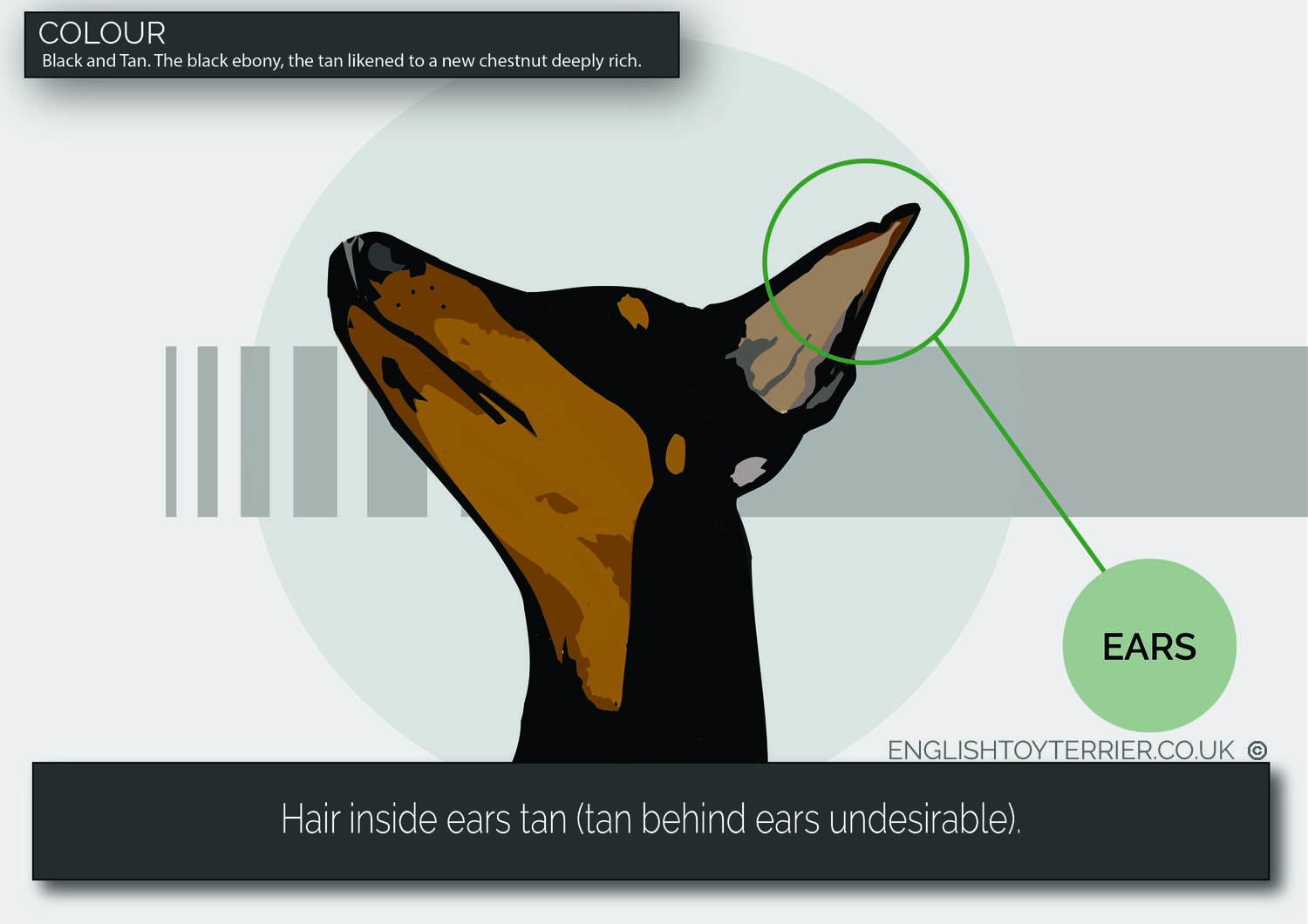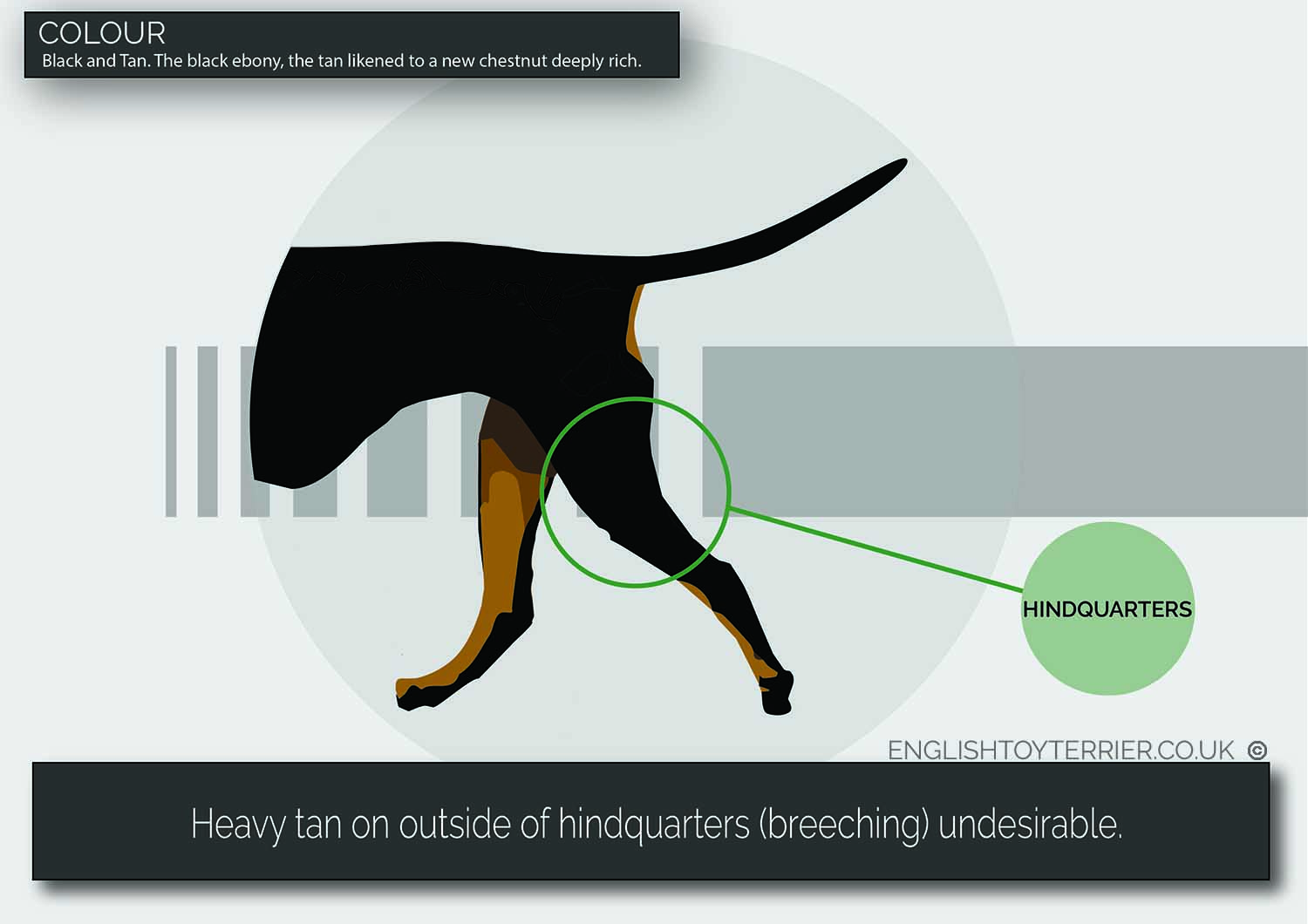The Breed Standard
This is the standard set by the Kennel Club for the breed, it gives us a picture in words of how the perfect English Toy Terrier should be. Responsible breeders produce dogs that are as close to the standard as possible, but of course there are always variations. Dog show judges critique dogs by comparing them to their breed standard and placing them in order of which dog adheres to it the most closely.
THE KC BREED STANDARD
The English Toy Terrier (Black & Tan) or ETT as we know it, is ideally 10-12″ (25-30 cms) at shoulder, with a weight of 6-8 lbs (2.7-3.6 kgs). The head to be long and narrow with a flat skull, fore face tapering gently giving a wedge shaped appearance; nose black, eyes small, dark to black and almond shaped. The ears, described as ‘candle flame’ shape, set high on the back of the skull and proportionately close together with pointed tips and facing front. The mouth has strong jaws and a perfect scissors bite with teeth level and strong.
The neck should be long, elegant and slightly arched. The topline should be very slightly curving up from behind the shoulder with a well rounded rump, and falling again to the root of tail. Tail to be thick at root tapering to a point not reaching below hock. Chest narrow and deep with well sprung ribs. The front legs should fall straight from the shoulder with fine bone eminently desirable. The hindquarters with a well rounded loin leading to a good turn of stifle with well let down hocks. Feet to be small, neat, compact and well arched.
The coat should be short, thick and shiny. The only allowable colours are black and tan; the black to be ebony with the tan a rich chestnut. Colours must not run or blend into each other but form clear and distinct divisions. The forelegs to be tanned in front to the knee, and with a black mark (thumb mark) on the centre of each pastern; a thin black line up each toe is known as penciling.
It is a Toy dog with Terrier characteristics and alert, remembering that historically he could acquit himself satisfactorily in the ‘Rat Pit’ and should never be unduly nervous.
The origin of the English Toy Terrier (Black and Tan) to give it its correct Kennel Club registered name, is rooted in the black and ratting terriers of 19th century England. These were a utilitarian dog whose prowess at rat killing was highly prized in the vermin infested towns which grew up during the industrial revolution. A fad evolved for miniaturizing them and this weakened the breed so much that it nearly brought about its extinction. Fortunately, enthusiasts of that time got to work, managing to reinstate the breed and stamp characteristics on it that we know today. A Breed Standard has been produced which lays out the ideal size and the distinctive markings that are required in an English Toy Terrier.
The Breed Standard is the formal description of a pedigree dog. It describes the ‘perfect’ example of that breed. The Breed Standard is the basis for comparison used at Dog Shows. The Judge compares the competing dogs with the standard, the closest to the ‘perfect’ example of the breed should win.The following text is the copyright of the (British) Kennel Club we would like to thank them for allowing its reproduction.
General Appearance
Well balanced, elegant and compact, sleek and cleanly built.
Characteristics
Toy with Terrier characteristics.
Temperament
Alert, remembering that historically he could acquit himself satisfactorily in the rat pit. Never unduly nervous.
Head and Skull
Head long, narrow, flat skull, wedge-shaped without emphasis of cheek muscles, well filled up under eyes. Top and bottom jaws held tightly together within compressed lips. Slight stop. Foreface tapers gently to provide wedge-shaped impression, in profile similar to that seen when viewed from front. Although an illusion of being overshot can result, any suggestion of snipey appearance is undesirable. Nose black.
Eyes
Dark to black, without light shading from iris. Relatively small, almond shaped, obliquely set and sparkling, not prominent.
Ears
Candle-flame shape, slightly pointed tips, placed high upon back of skull and proportionately close together. A guide to size can be obtained by bending ear forward – it should not reach eye. From nine months of age ear carriage must be erect. Entire inside of ear should face front. Leather of ear thin.
Mouth
Jaws strong, with a perfect, regular and complete scissor bite, i.e. upper teeth closely overlapping lower teeth and set square to the jaws. Teeth level and strong.
Neck
Long, graceful, slightly arched. Shoulders well laid back. Line of neck flowing into shoulders, and sloping off elegantly. Throatiness undesirable.
Forequarters
Legs falling straight from shoulders with elbows close to chest providing a straight front. Fine bone eminently desirable.
Body
Body compact, head and legs proportionate thus producing correct balance. Back very slightly curving from behind shoulder to loin, falling again to root of tail. Chest narrow and deep with ribs well sprung. Loins well cut up. Buttocks gently rounded.
Hindquarters
Well rounded loin leading to a good turn of stifle; hocks well let down; turning neither in nor out; a ‘tucked under’ appearance undesirable.
Feet
Dainty, compact; split up between toes; well arched, with jet black nails, two middle toes of front feet rather longer than others, hind feet cat-like. Hare feet undesirable.
Tail
Thick at root, tapering to point. Set low and not reaching below hock. ‘Gay’ tail undesirable if displayed to excess.
Gait/Movement
Ideal fore-movement akin to the ‘extended trot’; hackney action not desirable; equally a ‘shuffling gait’ undesirable. Hind action smooth with ease and precision combined with drive, there should be flowing quality to indicate true soundness.
Coat
Thick, close and glossy. A density of short hair required.
Colour
Black and Tan. The black ebony, the tan likened to a new chestnut deeply rich. Colours not running or blending into each other, but meeting abruptly, forming clear and well defined lines of colour division. Forelegs tanned to knees in front. The tan then continuing inside and at back of forelegs to point just below elbows, the thin black line up each toe (pencilling) and a clearly defined black mark (thumb mark) on centre of each pastern, and under chin. Hindlegs well tanned in front and inside with black bar dividing tan at centre of lower thigh. Heavy tan on outside of hindquarters (breeching) undesirable. Muzzle well tanned. Nose black, the black continuing along top of muzzle, curving below eyes to base of throat. A tan spot above each eye and a small tan spot on each cheek. Under-jaw and throat tanned, lip line black. Hair inside ears tan (tan behind ears undesirable). Each side of chest has some tan. Vent and under root of tail, tan. White hairs forming a patch anywhere totally undesirable.
Size
Ideal weight 2.7-3.6 kgs (6-8 lbs). Ideal height 25-30 cms (10-12 ins) at the shoulder.
Faults
Any departure from the foregoing points should be considered a fault and the seriousness with which the fault should be regarded should be in exact proportion to its degree and its effect upon the health and welfare of the dog.
Additional Notes
Male animals should have two apparently normal testicles fully descended into the scrotum.
